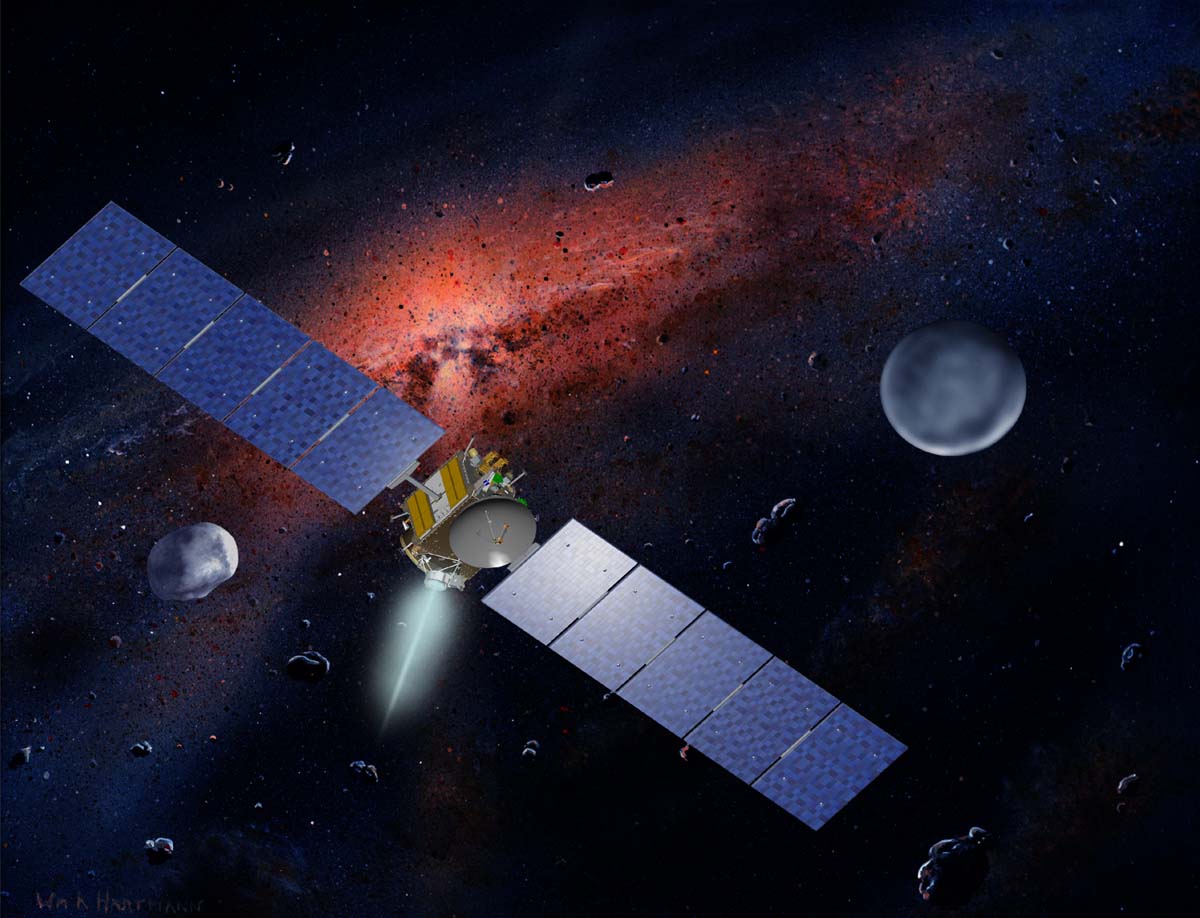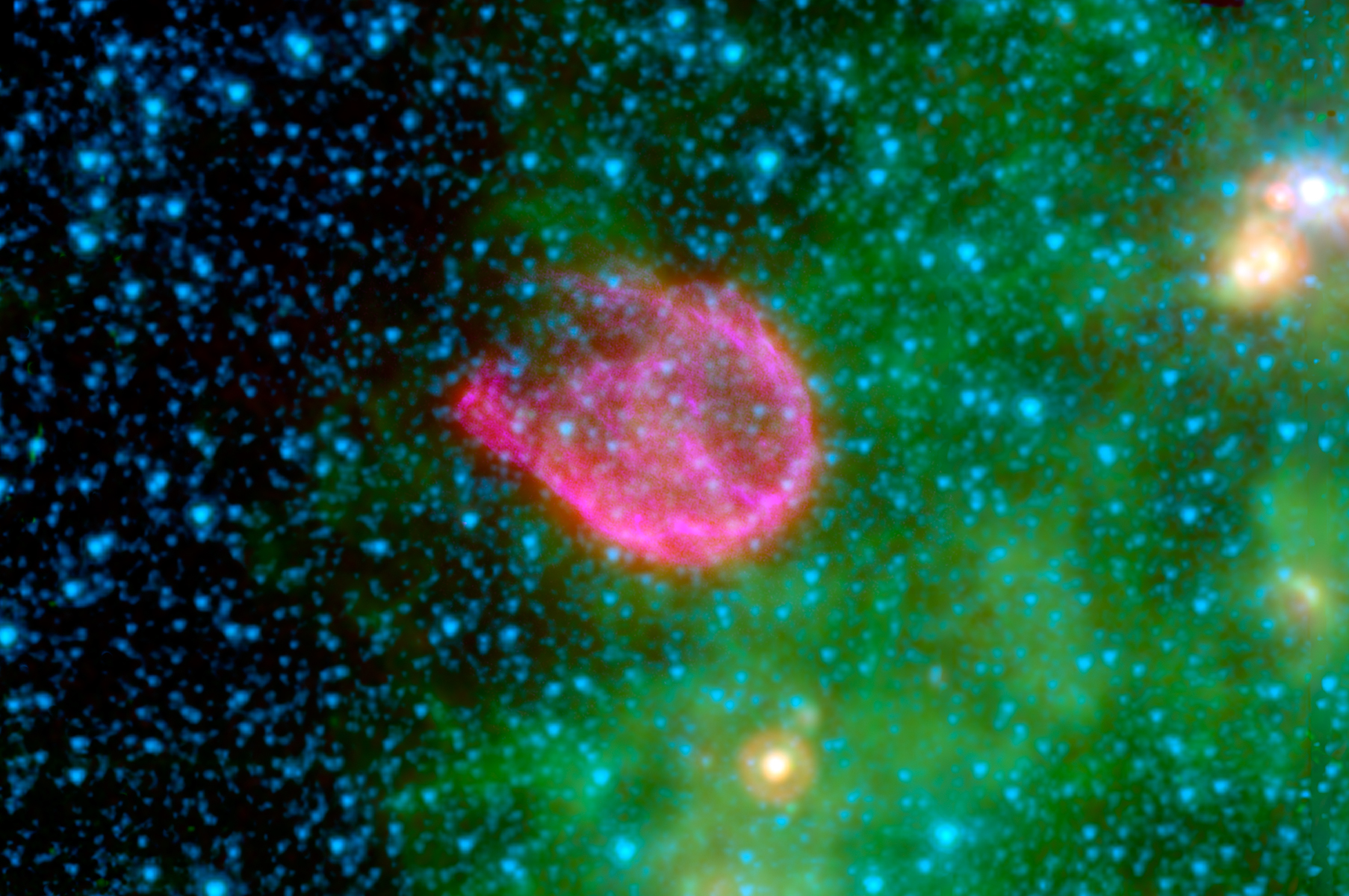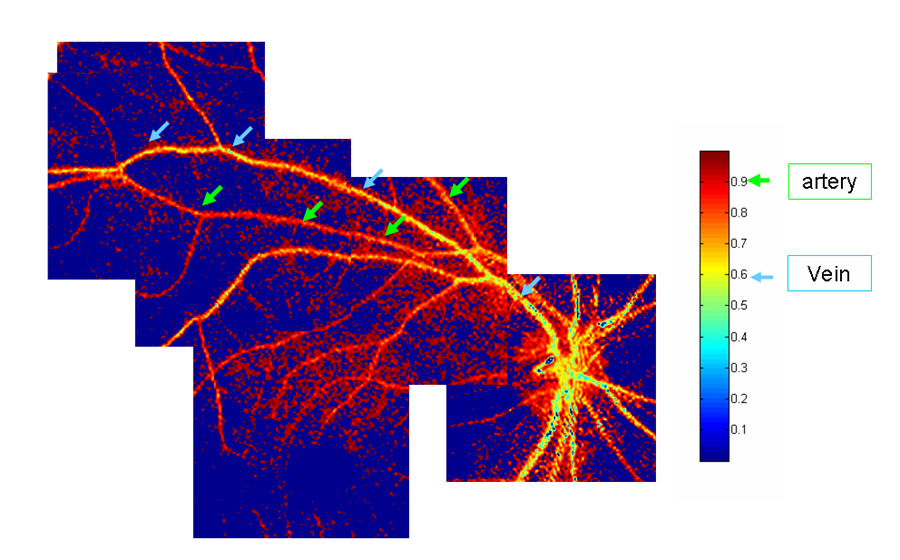Next Launch
Total Students
2,609
Total Launches
683
Eggs Survived
418 61.2%
Rockets Survived
536 78.5%
May 1, 2007
The Ions of Dawn
by Patrick L. Barry
This summer, NASA will launch a probe bound for two unexplored worlds in our solar system's asteroid belt—giant asteroids Ceres and Vesta. The probe, called Dawn, will orbit first one body and then the other in a never-before-attempted maneuver.
It has never been attempted, in part, because this mission would be virtually impossible with conventional propulsion. "Even if we were just going to go to Vesta, we would need one of the largest rockets that the U.S. has to carry all that propellant," says Marc Rayman, Project System Engineer for Dawn at JPL. Traveling to both worlds in one mission would require an even bigger rocket.
This is a trip that calls for the unconventional. "We're using ion propulsion," says Rayman.
The ion engines for the Dawn spacecraft proved themselves aboard an earlier, experimental mission known as Deep Space 1 (DS1). Because ion propulsion is a relatively new technology that's very different from conventional rockets, it was a perfect candidate for DS1, a part of NASA's New Millennium Program, which flight-tests new technologies so that missions such as Dawn can use those technologies reliably.
"The fact that those same engines are now making the Dawn mission possible shows that New Millennium accomplished what it set out to," Rayman says.
Ion engines work on a principle different from conventional rockets. A normal rocket engine burns a chemical fuel to produce thrust. An ion engine doesn't burn anything; a strong electric field in the engine propels charged atoms such as xenon to very high speed. The thrust produced is tiny--roughly equivalent to the weight of a piece of paper--but over time, it can generate as much speed as a conventional rocket while using only about 1/10 as much propellant.
And Dawn will need lots of propulsion. It must first climb into Vesta's orbit, which is tilted about 7 degrees from the plane of the solar system. After studying Vesta, it will have to escape its gravity and maneuver to insert itself in an orbit around Ceres--the first spacecraft to orbit two distant bodies. Dawn's up-close views of these worlds will help scientists understand the early solar system.
"They're remnants from the time the planets were being formed," Rayman says. "They have preserved a record of the conditions at the dawn of the solar system."
Find out about other New Millennium Program validated technologies and how they are being used in science missions at https://www.jpl.nasa.gov/nmp/TECHNOLOGY/infusion.php. You can also download Professor Starr's Dream Trip, a storybook for grown-ups about how ion propulsion enabled a scientist's dream of visiting the asteroids come true.
This article was provided by the Jet Propulsion Laboratory, California Institute of Technology, under a contract with the National Aeronautics and Space Administration.
 Artist’s rendering of Dawn spacecraft, with asteroids. Largest are Vesta and Ceres. Credits: Dawn spacecraft—Orbital Sciences Corporation; background art—William K. Hartmann, courtesy UCLA.
Artist’s rendering of Dawn spacecraft, with asteroids. Largest are Vesta and Ceres. Credits: Dawn spacecraft—Orbital Sciences Corporation; background art—William K. Hartmann, courtesy UCLA.
July 1, 2007
Ultraviolet Surprise
by Patrick L. Barry and Tony Phillips
How would you like to visit a universe full of exotic stars and weird galaxies the likes of which astronomers on Earth have never seen before?
Now you can. Just point your web browser to galex.stsci.edu and start exploring.
That's the address of the Galaxy Evolution Explorer image archive, a survey of the whole sky at ultraviolet wavelengths that can't be seen from the ground. Earth's atmosphere blocks far-ultraviolet light, so the only way to see the ultraviolet sky is by using a space telescope such as NASA’s Galaxy Evolution Explorer.
About 65% of the images from the all-sky survey haven't been closely examined by astronomers yet, so there are plenty of surprises waiting to be uncovered.
“The Galaxy Evolution Explorer produces so much data that, beyond basic quality control, we just don't have time to look at it all,” says Mark Seibert, an astronomy postdoc at the Observatories of the Carnegie Institution of Washington in Pasadena, California.
This fresh view of the sky has already revealed striking and unexpected features of familiar celestial objects. Mira is a good example. Occasionally visible to the naked eye, Mira is a pulsating star monitored carefully by astronomers for more than 400 years. Yet until Galaxy Evolution Explorer recently examined Mira, no one would have guessed its secret: Mira possesses a comet-like tail 13 light-years long.
“Mira shows us that even well-observed stars can surprise us if we look at them in a different way and at different frequencies,” Seibert says.
Another example: In April, scientists announced that galaxies such as NGC 1512 have giant ultraviolet spiral arms extending three times farther out into space than the arms that can be seen by visible-light telescopes. It would be like looking at your pet dog through an ultraviolet telescope and discovering his ears are really three times longer than you thought!
The images from the ultraviolet space telescope are ideal for hunting new phenomena. The telescope's small, 20-inch primary mirror (not much bigger than a typical backyard telescope) offers a wide field of view. Each image covers 1.2 degrees of sky—lots of territory for the unexpected.
If someone combing the archives does find something of interest, Seibert advises that she or he should first search astronomy journals to see whether the phenomenon has been observed before. If it hasn't, email a member of the Galaxy Evolution Explorer science team and let them know, Seibert says.
So what are you waiting for? Fire up your web browser and let the discoveries begin!
This article was provided by the Jet Propulsion Laboratory, California Institute of Technology, under a contract with the National Aeronautics and Space Administration.
 Astronomers looking at new ultraviolet images from the Galaxy Evolution Explorer spacecraft were surprised to discover a 13-light-year long tail on Mira, a star that has been extensively studied for 400 years.
Astronomers looking at new ultraviolet images from the Galaxy Evolution Explorer spacecraft were surprised to discover a 13-light-year long tail on Mira, a star that has been extensively studied for 400 years.
Aug. 1, 2007
Cosmic Cockroaches
by Dr. Tony Phillips
Cockroaches are supposed to be tough, able to survive anything from a good stomping to a nuclear blast. But roaches are wimps compared to a little molecule that has recently caught the eye of biologists and astronomers—the polycyclic aromatic hydrocarbon.
Polycyclic aromatic hydrocarbons (PAHs for short) are ring-shaped molecules made of carbon and hydrogen. “They’re all around us,” says Achim Tappe ofthe Harvard Center for Astrophysics. “PAHs are present in mineral oils, coal, tar, tobacco smoke and automobile exhaust.” Aromatic, ring-shaped molecules structurally akin to PAHs are found in DNA itself!
That’s why Tappe’s recent discovery may be so important. “PAHs are so tough, theycan survive a supernova.”
The story begins a few thousand years ago when a massive star in the Large Magellanic Cloud exploded, blasting nearbystar systems and interstellar clouds with hot gas and deadly radiation. The expanding shell, still visible from Earthafter all these years and catalogued by astronomers as “N132D,” spans 80 light years and has swept up some 600 Suns worth of mass.
Last year “we observed N132D using NASA’s Spitzer Space Telescope,” says Tappe. Spitzer is an infrared (IR)telescope, and it has a spectrometer onboard sensitive to the IR emissions of PAHs. One look at N132D revealed “PAHs all around the supernova’s expanding shell. They appear to be swept up by a shock wave of 8 million degree gas. This is causing some damage to the molecules, but many of the PAHs are surviving.”
Astronomers have long known that PAHs are abundant not only on Earth but throughout the cosmos—they’ve been found in comet dust, meteorites and many cold interstellar clouds—but who knew they were so tough? “This is our first evidence that PAHs can withstand a supernova blast,” he says.
Their ability to survive may be key to life on Earth. Many astronomers are convinced that a supernova exploded in our corner of the galaxy 4-to-5 billion years ago just as the solar system was coalescing from primitive interstellar gas. In one scenario of life’s origins, PAHs survived and made their way toour planet. It turns out that stacks of PAHs can form in water—think, primordial seas—and provide a scaffold for nucleic acids with architectural properties akin to RNA and DNA. PAHs may be just tough enough for genesis.
Cockroaches, eat your hearts out.
Find out about other Spitzer discoveries at www.spitzer.caltech.edu.
This article was provided by the Jet Propulsion Laboratory, California Institute of Technology, under a contract with the National Aeronautics and Space Administration.
 Using the IR spectrometer on the Spitzer Space Telescope, scientists found organic molecules in supernova remnant N132D.
Using the IR spectrometer on the Spitzer Space Telescope, scientists found organic molecules in supernova remnant N132D.
Sept. 1, 2007
A Missile in Your Eye
by Patrick L. Barry
Satellite technology designed to catch ballistic missile launches may soon help doctors monitor the health of people's eyes.
For the last 15 years, Greg Bearman and his colleagues at JPL have been working on a novel design for a spectrometer, a special kind of camera often used on satellites and spacecraft. Rather than snapping a simple picture, spectrometers measure the spectrum of wavelengths in the light coming from a scene. From that information, scientists can learn things about the physical properties of objects in the photo, be they stars or distant planets or vegetation on Earth's surface.
In this case, however, the challenge was to capture snapshots of short-lived events—like missile launches! The team of JPL scientists designed the new spectrometer, called a computed tomographic imaging spectrometer (CTIS), in collaboration with the Ballistic Missile Defense Organization as a way to detect missiles by the spectral signatures of their exhaust.
But now the scientists are pointing CTIS at another fast-moving scene: the retina of an eye.
Blood flowing through the retina has a different spectral signature when it is rich in oxygen than when it is oxygen deprived. So eye doctors can use a spectrometer to look for low oxygen in the retina—an indicator of disease. However, because the eye is constantly moving, images produced by conventional spectrometers would have motion blurring that is difficult to correct.
The spectrometer that Bearman helped to develop is different: It can capture the whole retina and its spectral information in a single snapshot as quick as 3 milliseconds. "We needed something fast," says Bearman, and this spectrometer is "missile-quick."
CTIS is even relatively cheap to build, consisting of standard camera lenses and a custom, etched, transparent sheet called a grating. "With the exception of the grating, we bought everything on Amazon," he says.
The grating was custom-designed at JPL. It has a pattern of microscopic steps on its surface that split incoming light into 25 separate images arranged in a 5 by 5 grid. The center image in the grid shows the scene undistorted, but colors in the surrounding images are slightly "smeared" apart, as if the light had passed through a prism. This separation of colors reveals the light's spectrum for each pixel in the image.
"We're conducting clinical trials now," says Bearman. If all goes well, anti-missile technology may soon be catching eye problems before they have a chance to get off the ground.
Information about other NASA-developed technologies with spin-off applications can be found at https://spinoff.nasa.gov/.
This article was provided by the Jet Propulsion Laboratory, California Institute of Technology, under a contract with the National Aeronautics and Space Administration.
 This three-color composite image from the computed tomographic imaging spectrometer shows the oxygenation of the blood in the arteries and veins of a human retina. (Arteries appear red, veins appear yellow.)
This three-color composite image from the computed tomographic imaging spectrometer shows the oxygenation of the blood in the arteries and veins of a human retina. (Arteries appear red, veins appear yellow.)